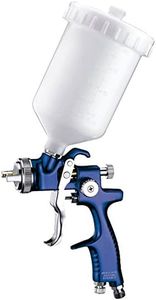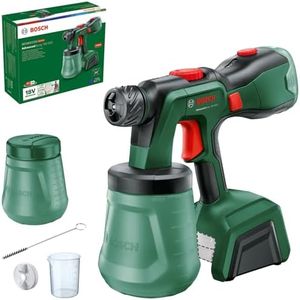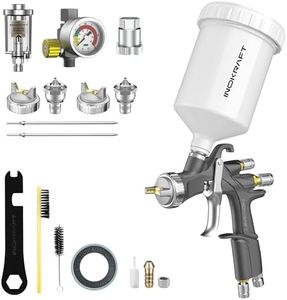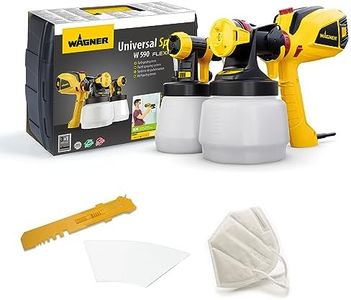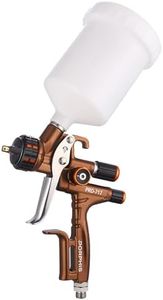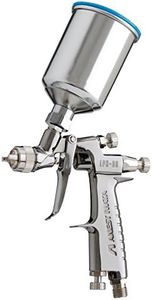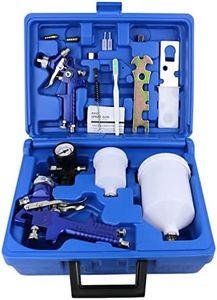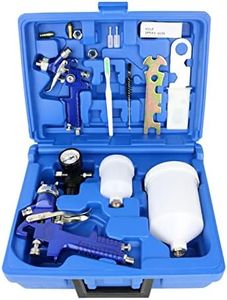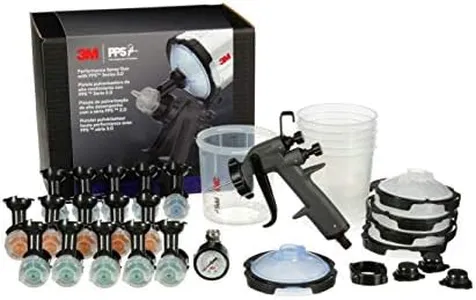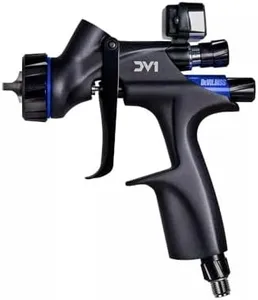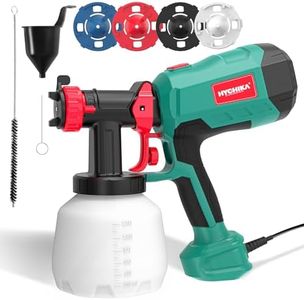We Use CookiesWe use cookies to enhance the security, performance,
functionality and for analytical and promotional activities. By continuing to browse this site you
are agreeing to our privacy policy
10 Best Auto Paint Gun
From leading brands and best sellers available on the web.Buying Guide for the Best Auto Paint Gun
Choosing the right auto-paint gun is crucial for achieving a smooth and professional paint finish on vehicles. The ideal paint gun enhances efficiency, gives you control, and matches your personal or business painting needs. Before making a choice, think about the type of projects you will handle (small touch-ups or full vehicle sprays), your experience level, and whether you'll be working in a home garage or a professional shop environment. Understanding the core specifications will help you pick a gun that feels comfortable, is easy to maintain, and delivers the quality you expect.Type (HVLP vs. LVLP vs. Conventional)The type of paint gun refers to how it atomizes and applies paint. HVLP (High Volume, Low Pressure) guns use a lot of air and less pressure, making them efficient and reducing paint waste, which is great for a cleaner workspace and tighter environmental regulations. LVLP (Low Volume, Low Pressure) guns operate at even lower air consumption, making them a fit for smaller compressors. Conventional guns use high pressure and are known for speed and heavy application but waste more paint. If you value precision and less overspray, HVLP suits most home and professional users; LVLP is helpful if your air compressor is small or less powerful; and conventional is best for those who prioritize speed or heavier coats.
Nozzle/Tip SizeThe nozzle or tip size determines the thickness and type of coating the gun can spray effectively. Smaller tips (1.0-1.2 mm) are great for fine details and thinner paints like clear coats, while medium sizes (1.3-1.5 mm) handle base coats or general-purpose painting. Larger tips (1.7-2.0 mm and above) are ideal for heavy materials like primers. Your choice should match the type of paint you will use most often. Always check the paint manufacturer's recommendations and think about whether you're doing detailing or broad, heavy-duty work.
Paint Cup CapacityThis refers to the volume of paint the cup attached to the gun can hold. Smaller cups (under 400 ml) are suitable for touch-ups or smaller jobs, while medium (400-600 ml) fits most general car panels. Larger cups (over 600 ml) are best for big surfaces or when you want fewer refills. If you primarily do small repairs, a compact cup is lighter and easier to manage, but for bigger projects, a larger cup increases efficiency by reducing time spent refilling.
Feed Type (Gravity vs. Siphon vs. Pressure)Feed type is about how paint moves from the cup to the gun. Gravity feed guns have cups mounted on top and work well at lower pressures, making them popular for detail and finishing work. Siphon feed guns pull paint from a cup below and are useful for larger amounts of paint, but require more air. Pressure feed systems use external pressurized tanks for continuous, high-volume spraying, more common in professional shops. For home and detail use, gravity feed is easiest and gives good results, but for bigger, repetitive jobs, siphon or pressure feed might be more efficient.
Adjustability (Fan Pattern and Flow Controls)Most spray guns offer controls to adjust the width of the spray pattern and the amount of paint being delivered. Greater adjustability means you can tailor the spray for wide panels or tight, intricate areas. If you plan to paint different parts—from small repairs to whole panels or even custom graphics—choose a gun with easy, accessible controls so you can fine-tune the results with minimal hassle.
Ease of Cleaning and MaintenanceSince paint guns need to be cleaned after every use to avoid blockages and maintain performance, their design can make this process easy or challenging. Look for guns that are straightforward to disassemble and don't have too many tiny parts. If you value convenience or are less experienced, opt for a design that’s simple to take apart and reassemble so you spend more time painting and less time cleaning.

